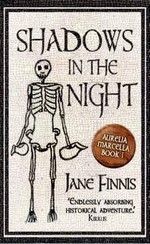Scotland Yard Detective Mark Brendon is on holiday and while on his way to fish in an abandoned quarry on Dartmoor meets a lady whose looks strike him more than somewhat. Then a man appears, chats about fishing, and tells him about a couple building a bungalow not far from the quarry. Four days later the husband of the couple is found murdered and the finger of suspicion is pointed at his uncle-in-law, a man fitting the description of Mr Fish Chatter. And what's more, the striking lady turns out to be the murdered man's widow.
Thus begins The Red Redmaynes, the title referring to a family so-called because they all have red hair -- or should I say red manes?
The novel opens at a stately, not to say sedate, pace, but by the closing chapters the characters whirl about in a lively mazurka.
Brendon's investigative method combines "the regulation methods of criminal research with the more modern deductive system", so here we have no leaps of faith or sudden intuitions but rather stolid police work followed on reasoned lines in a case puzzling for its leads that constantly lead nowhere. For example, the trail of the red-haired uncle-in-law's mad ride on a motorbike with a suspicious sack strapped to its back vanishes into mid air -- as does the body from the bungalow.
Has Redmayne escaped abroad? Brendon suspects he may have killed himself from horror at what he did. But then another of the widow's uncles is murdered and again the body cannot be found. Brendon meantime has fallen for the widow but has a rival for her hand in the form of an Italian servant who bids fair to sweep her off her feet -- and her husband not even officially declared dead yet!
The remaining chapters rattle along with criminal goings-on all over the place including abroad, and while readers may tumble to part of the solution perhaps a quarter way through, the twist at the end is striking and the place of concealment of a certain item caught me by surprise.
My verdict: Readers may find the early part slow going but may wish to keep reading as there are surprises ahead as the pace increases and Brendon dashes hither and yon, constantly thwarted despite some near-misses. The case is finally solved with assistance from a man who sees what Brendon does not, reminding readers not all investigators are all-seeing, even those who use the modern deductive system, which depends on established facts, which are difficult to pin down in this particular case.
Etext: http://www.gutenberg.org/files/14167/14167-h/14167-h.htm#2HCH0003


